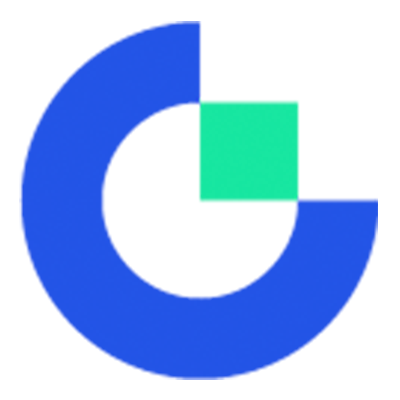Introduction
Navigating the Web3 market map can be daunting, but understanding the blockchain ecosystem is crucial for anyone looking to harness its potential. From DeFi to NFTs, the Web3 landscape offers a wealth of opportunities. This comprehensive guide will demystify the key components and emerging trends, helping you chart your course through the decentralized frontier.
The Web3 Revolution: Understanding the Basics
The Web3 revolution is transforming the digital landscape, ushering in a new era of decentralized technologies and applications. At its core, Web3 represents a paradigm shift from the centralized web we know today to a more open, transparent, and user-centric internet. This evolution is built on blockchain technology, which serves as the foundation for a wide array of innovative solutions and platforms.
The Web3 ecosystem encompasses various sectors, including decentralized finance (DeFi), non-fungible tokens (NFTs), decentralized autonomous organizations (DAOs), and more. Each of these sectors contributes to the broader vision of a decentralized web, where users have greater control over their data and digital assets. According to recent statistics, the total value locked (TVL) in DeFi protocols has reached $43.67 billion as of September 2024, highlighting the growing adoption and potential of Web3 technologies.
As we delve deeper into the Web3 market map, it's crucial to understand that this ecosystem is not just about cryptocurrencies. It's a comprehensive reimagining of how we interact with digital systems, conduct transactions, and manage our online identities. The blockchain industry landscape is vast and continuously evolving, with new projects and innovations emerging regularly to address the challenges and opportunities presented by this technological revolution.
Key Components of Web3 Infrastructure
The Web3 infrastructure is built on several key components that work together to create a robust and decentralized ecosystem. These components include:
1.Layer 1 Blockchains: These are the foundational networks like Ethereum, Solana, and Polkadot that provide the base layer for decentralized applications.
2.Layer 2 Scaling Solutions: Platforms like Optimism and Arbitrum that aim to improve the scalability and efficiency of Layer 1 networks.
3.Interoperability Protocols: Projects like Cosmos and Polkadot that enable different blockchains to communicate and share data.
4.Decentralized Storage: Solutions such as IPFS and Filecoin that offer alternatives to centralized cloud storage.
5.Oracles: Services like Chainlink that provide real-world data to smart contracts.
6.Identity Solutions: Platforms that enable decentralized identity management and verification.
These components form the backbone of the Web3 ecosystem, enabling the development and deployment of decentralized applications (dApps) across various sectors. The interplay between these elements creates a rich and diverse landscape of possibilities for developers, entrepreneurs, and users alike.
For instance, the DeFi sector has seen remarkable growth, with platforms like Uniswap and Aave leading the charge. According to DeFi Llama, the top 10 DeFi protocols account for over 60% of the total TVL in the ecosystem, demonstrating the concentration of value in key players. This concentration also highlights the potential for new entrants to disrupt the market with innovative solutions.
Emerging Trends in Web3 Development
As the Web3 ecosystem continues to mature, several emerging trends are shaping its development and adoption:
1.Real-World Asset Tokenization: The tokenization of real-world assets, such as real estate and commodities, is gaining traction. This trend is bridging the gap between traditional finance and DeFi, potentially unlocking trillions of dollars in liquidity.
2.Decentralized Identity: With growing concerns over data privacy, decentralized identity solutions are becoming increasingly important. These systems allow users to control their personal information and digital identities without relying on centralized authorities.
3.GameFi and Play-to-Earn: The intersection of gaming and finance is creating new economic models where players can earn cryptocurrency through gameplay. This trend is particularly popular in emerging markets, with games like Axie Infinity leading the charge.
4.DAOs for Governance: Decentralized Autonomous Organizations are evolving beyond simple voting mechanisms to become complex governance systems for protocols and even real-world entities.
5.Layer 2 Scaling Solutions: As network congestion and high gas fees continue to be challenges for Ethereum, Layer 2 solutions are becoming increasingly important for scaling dApps and reducing transaction costs.
These trends are not only shaping the development of new projects but also influencing investment strategies in the Web3 space. According to a report by Galaxy Digital, venture capital investments in Web3 projects reached $33 billion in 2023, with a significant portion going towards infrastructure and DeFi projects.
The Future of Web3: Opportunities and Challenges
The future of Web3 presents both exciting opportunities and significant challenges. On the opportunity side, we're seeing increased institutional adoption of blockchain technologies, with major companies like JPMorgan and Facebook (now Meta) exploring blockchain solutions. This institutional interest is likely to drive further innovation and adoption in the space.
Moreover, the potential for Web3 to democratize finance and create new economic models is immense. DeFi protocols are already providing financial services to underbanked populations, while NFTs are creating new revenue streams for artists and content creators.
However, challenges remain. Regulatory uncertainty continues to be a major hurdle for many Web3 projects. The recent crackdown on certain crypto exchanges by the SEC serves as a reminder of the regulatory risks in this space. Additionally, scalability issues, user experience challenges, and the need for better interoperability between different blockchain networks are all areas that require ongoing work and innovation.
Despite these challenges, the Web3 ecosystem continues to grow and evolve. As more developers, entrepreneurs, and users enter the space, we can expect to see even more innovative solutions and use cases emerge. The Web3 market map is constantly expanding, with new sectors and applications being developed at a rapid pace.
In conclusion, the Web3 ecosystem represents a fundamental shift in how we interact with the digital world. From decentralized finance to NFTs and beyond, the opportunities for innovation and disruption are vast. As the technology matures and adoption increases, we can expect to see Web3 technologies become an increasingly integral part of our digital lives.
For those looking to explore the Web3 space further, platforms like Gate.io offer a wide range of cryptocurrency trading options and access to various Web3 projects. As always, it's important to conduct thorough research and understand the risks before investing in any Web3 project or cryptocurrency.
Conclusion
The Web3 revolution is reshaping our digital landscape, offering unprecedented opportunities for innovation and disruption. From decentralized finance to NFTs, this ecosystem is rapidly evolving, driven by key infrastructure components and emerging trends. As institutional adoption grows and new use cases emerge, Web3 technologies are poised to become integral to our digital lives. However, navigating this space requires careful consideration of regulatory challenges and ongoing technological developments. The future of Web3 is bright, promising a more open, transparent, and user-centric internet for all.
Risk Warning: Market volatility, regulatory changes, and technological vulnerabilities may impact Web3 investments. Always conduct thorough research before engaging in any blockchain-related activities.



还没有评论,来说两句吧...